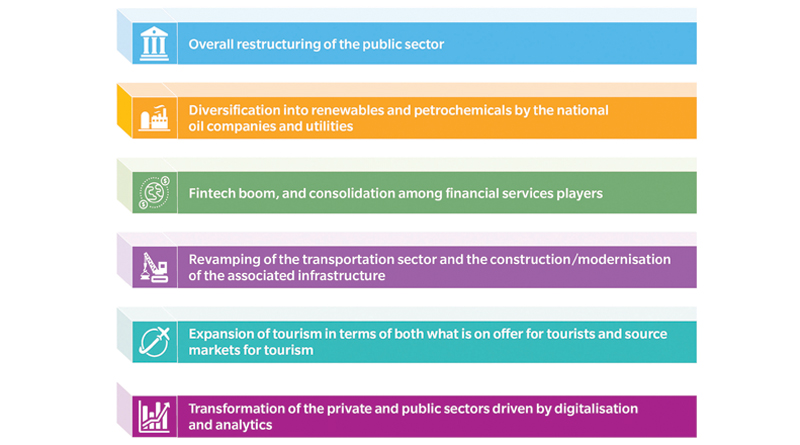

The Gulf economies currently boast $43.7 trillion in liquid assets and quasi-liquid assets ($3.3 trillion in sovereign wealth funds and $40.4 trillion in proven oil and gas reserves) — equating to $841 million in assets per capita. Factors such as fluctuating oil prices, ongoing replacement of fossil fuels and slow transformation of some economies has induced a general sentiment of Gulf economies reporting a slowdown in economic activity.
On the contrary, the combination of such a strong portfolio of liquid assets and low debt levels are the key factors in the sustainability of Gulf economies, highlights a new report by Oliver Wyman, the global strategy consultancy firm. Titled ‘The Arabian Gulf Economies: Asset rich, transforming and full of opportunities’, the report sheds light on factors that will further drive economic transformation and diversification in the region.
One of the significant actions taken by the Gulf countries is the introduction of regional transformational programmes to wean away from fossil fuel dependency. The modification of revenue channels and high value liquid assets are shaping into the main collaterals required to finance the formidable economic transformation and diversification initiatives led by the GCC regimes. Measures such as the VAT initiatives in the UAE, Saudi Arabia and now Bahrain have supported the diversification of these economies.
“Undoubtedly, the oil & gas reserves of the Gulf countries have enabled one of the biggest economic booms in human history, but this has also materialised because these countries had, and still have, the willingness to advance and improve themselves. There are several countries that have even bigger oil & gas reserves, and abundant water and farmland and yet struggle to feed their populations,” commented Pedro Oliver, Regional Head (MEA) region.
“Looking towards the future, GCC economies must take the advantage of the valuable lead time that they have to transform into post-oil economies, because fossil-fuel substitution will not happen as fast as many people believe it will,” he added.
The report further highlights the key areas of growth opportunities in the region over the next five years, such as overall restructuring of the public sector, diversification into renewables and petrochemicals, the fintech boom, revamping and modernisation of the transportation and construction sectors; tourism and transformation of the private and public sectors driven by digitalisation and analytics.
Other factors such as the GCC’s relatively young population, are also seen as major future contributors to the workforce of the future, by attaining the necessary skill set required to work in the sectors leading the transformation and diversification of economies. 30 per cent are currently below the age of 21 and are expected to grow over the next decade.
Furthermore, there is a positive trend in the population’s literacy rate as 32 per cent of the young population is expected to have acquired the necessary skills to work in the tertiary sector. The population growth will also increase internal consumption and therefore support GDP growth.
Oman Observer is now on the WhatsApp channel. Click here



